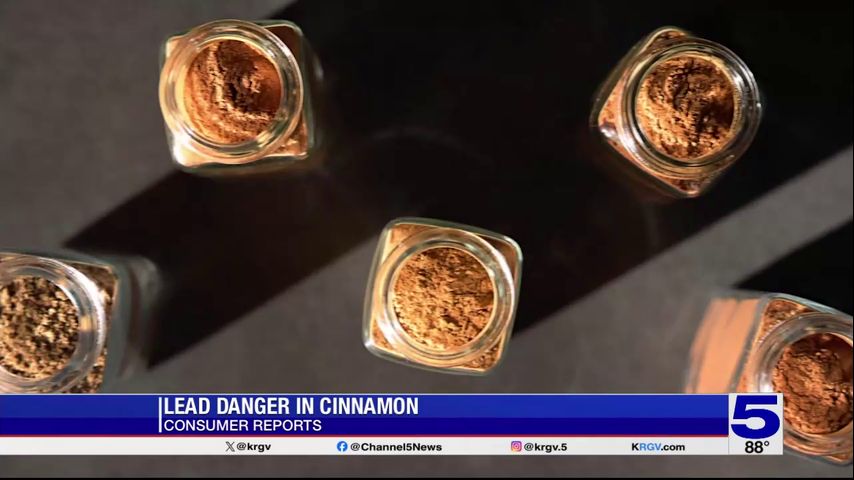Consumer Reports: Lead danger in cinnamon
A pantry staple found in many of our kitchens may be toxic. That’s the alarming takeaway from a new Consumer Reports investigation into lead in ground cinnamon.
In some cases, tests reveal high lead levels. Consumer Reports tested 36 ground cinnamon products and spice blends with cinnamon.
One out of three contained lead levels above 1 part per million - the threshold that can trigger a recall in New York state, but not nationwide.
Just a quarter teaspoon of those products has more lead than you should consume in an entire day. This is an important reminder that lead exposure can have serious health consequences, especially for children and during pregnancy. In adults, it's been linked to kidney damage and hypertension.
How does lead get into cinnamon in the first place?
Cinnamon trees take about ten years to grow giving ample time to absorb lead from soil and water. Additionally, during the drying process lead can become concentrated. Most cinnamon sold in the U.S. is imported from Indonesia, Sri Lanka, and Vietnam, where regulations on soil contaminants may be less stringent.
The highest lead levels from CR’s tests were found in three lesser-known brands, Mimi’s Products, Paras, and EGN, which are sold mostly in international food markets.
Consumer Reports says if you have one of those products, we think you should throw it away. After being informed of the results, only Paras and EGN told Consumer Reports that they would stop selling their products.
Only two of the ten other companies replied: Deep and Yu Yee. Both said that they tested their product or relied on tests from their suppliers.
On the other side, six products had very low or no detectable lead, including 365 Whole Foods Market and Morton & Bassett San Francisco.
And if you’re wondering what the government is doing about this, there are no federal limits for lead in cinnamon or any other spice.
Consumer advocates call for national regulations similar to those in New York, where more than 100 spices have been recalled since 2016 due to heavy metal contamination.
CR has informed the Food and Drug Administration of its results. The agency said it could not comment on CR’s tests.
In the meantime, experts recommend choosing cinnamon with the lowest lead levels in CR’s tests, sticking with mainstream brands, and limiting overall lead exposure from all sources.





